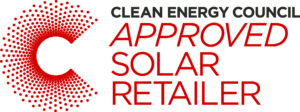Our research and experience consistently shows Jinko solar panels to be the best, most reliable and valuable panels available on the Australian solar market today. Their most popular product is their 370W 66 cell solar panel in their Cheetah series. Another great option is their N-Type 370W solar panel that comes with an impressive 20 year product warranty and 30 year performance warranty.
An excellent alternative to Jinko panels is EGing PV. While EGing doesn’t command the market share that Jinko does, they have been making a splash in the sector with the impressive power of their innovative technology. With great output, competitive prices and 15 year product warranties, EGing solar panels are among the best.
If you’re looking for the best premium solar panel, SolarEdge and Sunpower are two of the best options if affordability is not your first priority. In addition to excellent efficiency and power, SolarEdge premium solar panels also come with a valuable 15 year product warranty to safeguard your investment.





